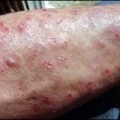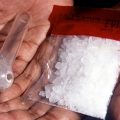Methamphetamine abuse is a serious and growing problem worldwide. Methamphetamine, also known as meth, crystal meth, ice, or speed, is a highly addictive stimulant drug that affects the central nervous system. Methamphetamine abuse can lead to a wide range of physical, psychological, and social problems, including addiction, overdose, psychosis, violence, and criminal behavior.
Methamphetamine is typically used in a crystalline form that can be smoked, injected, snorted, or taken orally. It produces a rush of euphoria, increased energy, and a sense of well-being. However, these effects are short-lived, and the user may experience a crash, depression, and fatigue afterward.
The long-term use of methamphetamine can lead to severe health problems, including cardiovascular disease, stroke, liver and kidney damage, and mental health disorders such as anxiety, depression, and psychosis. Methamphetamine abuse can also damage relationships, and lead to job loss, financial problems, and legal issues.
What is “meth face”?
“Meth face” is a term that people use to describe the physical effects that meth use can have. A person’s appearance may become drastically different following chronic meth use. The effects can include sores and lesions on the skin and premature aging. Lesions are often the result of picking at the skin, a common side effect of meth use.
The constant picking can lead to open sores that are susceptible to infection. The skin might appear discolored or have blemishes that resemble acne or a rash. In addition, meth use can cause wrinkles, dark spots, and hardened skin. Meth also affects face symmetry. Methamphetamine use can cause acne or worsen existing acne. This is because the drug causes an increase in oil production, which can clog pores and lead to breakouts.
A 2020 study looked at this phenomenon. The authors note that facial asymmetry increases slightly with age, regardless of drug use. However, people who use meth have exaggerated facial asymmetry. Severe tooth decay and gum disease are other consequences of meth use. “Meth mouth” can cause the teeth to break or fall out, affecting a person’s oral health and appearance.
A 2015 study involving 571 people using meth showed that 96% had cavities, 58% had tooth decay, and 31% had six or more missing teeth. People who use meth often have black, stained, and rotting teeth. The extensive damage is likely due to dry mouth, poor oral hygiene, and the acidic nature of the drug. Weight loss and malnutrition can contribute to the sunken eyes and hollow cheeks that often appear in those using meth. Additionally, the toll on overall health can affect the facial appearance of these individuals and cause premature aging of the skin, making it appear dull, dry, and wrinkled.
What causes meth face sores?
Meth face sores are often the result of a person picking and scratching at the skin, which is a common side effect of meth use. The constant picking can lead to open sores that are susceptible to infection. Meth is a water-soluble drug. Therefore, a person using the drug may sweat out toxic meth from their pores. Scientists have detected meth in sweat 2 hours after use, with traces remaining for more than a week following multiple doses. Sweat that contains meth toxins can damage the skin and cause sores to form.
What are meth scabs and meth mites?
Meth mites are imaginary bugs or insects that people using meth may “feel.” A person perceives these mites because of a tactile hallucination called formication. Feeling these crawling sensations without physical stimulation is a form of dysesthesiaTrusted Source. Other sensations may include burning, tingling, numbness, and cold. The crawling feeling occurs due to the combination of an increased body temperature, which leads to sweating and oily skin, and dehydration. The sensation of meth mites is so overwhelming that individuals may begin to scratch intensely and pick at the skin in an attempt to relieve themselves of the bugs. Experts believe that about 43% of individuals with methamphetamine use disorder experience psychotic symptoms, which include hallucinations that may involve meth mites. Meth sores occur when imaginary meth mites prompt scratching and skin picking. Meth sores may also result from burns from meth paraphernalia, a weakened immune system, a lack of personal hygiene, and infection.
Treatment for meth sores
There is no specific treatment for meth sores other than general wound care. If a person has open sores, it is important to keep them clean, dry, and free of debris to help prevent infection. They can also use a topical antibiotic cream to help kill bacteria and promote healing. Anyone with meth sores should avoid scratching or picking at them, as doing so could introduce germs into the wounds.
How to prevent methamphetamine abuse
Preventing meth abuse can be a challenging task, but there are several strategies that can be effective in reducing the likelihood of individuals abusing this drug. Here are some ways to prevent methamphetamine abuse:
- Education: Educating people about the harmful effects of methamphetamine and the risks associated with its use is critical in preventing its abuse. This can be done through awareness campaigns, public service announcements, and educational programs in schools and communities.
- Community action: Community efforts can also help prevent methamphetamine abuse. This can include neighborhood watch programs, community clean-up events, and support groups for those recovering from addiction.
- Limiting access: One way to prevent methamphetamine abuse is to limit access to the drug. This can be done through strict regulation of the chemicals used to make methamphetamine, increased law enforcement efforts, and limiting the availability of the drug through legal channels.
- Early intervention: Early intervention is important in preventing methamphetamine abuse from progressing to addiction. This can include identifying and addressing risk factors early on, such as mental health issues, social isolation, and family history of addiction.
- Treatment and support: For those struggling with methamphetamine addiction, access to effective treatment and support services is essential. This can include behavioral therapy, counseling, support groups, and medication-assisted treatment.
Preventing methamphetamine abuse requires a multi-faceted approach that involves individuals, families, communities, and policymakers. By working together to raise awareness, limit access, and provide support and treatment for those in need, we can help prevent the harmful effects of methamphetamine abuse.
Conclusion
Meth face is a term that people use to describe the visible signs of methamphetamine use. These signs may include sores, skin infections, dry skin, facial asymmetry, premature aging, and a hollow, sunken appearance. Additionally, severe dental decay often characterizes meth use.
The term “meth face” describes the physical effects of chronic methamphetamine use, which can include skin sores and lesions, premature aging, and severe dental decay. Meth use can cause facial asymmetry, as well as sunken eyes and hollow cheeks due to weight loss and malnutrition. Meth mites, imaginary bugs or insects, may be felt by users due to a tactile hallucination called formication. Treatment for meth sores involves general wound care and preventing infection. Meth use poses numerous short- and long-term risks and dangers, including addiction, serious physical and mental health problems, and changes in brain function. Support and treatment options are available for those with methamphetamine use disorder.






